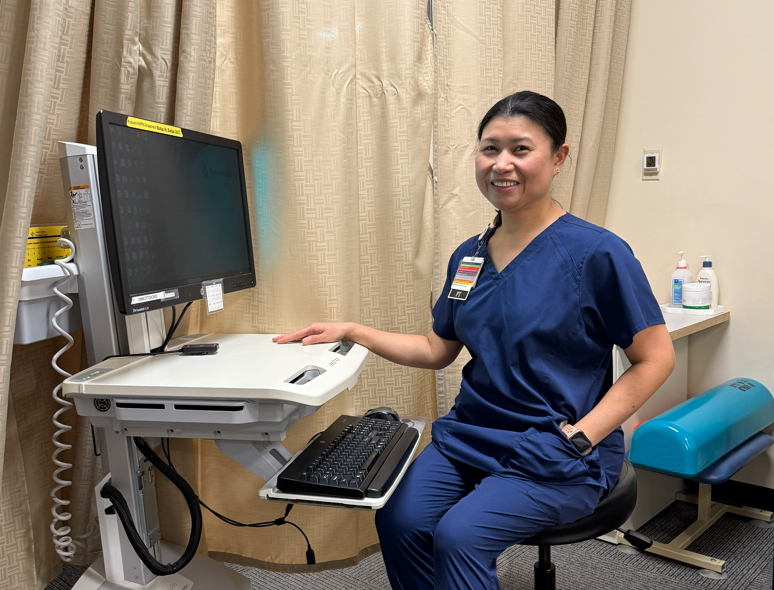The start of a new school year is a time to get organized, get active and have fun. Learn how to have a well-balanced school year.
Whether your child is just starting kindergarten or simply moving up a grade, back-to-school is a great time to review your child’s medical needs and ensure he or she gets off to the best start for a healthy school year. Start by helping your child look forward to school. Talk about it as an exciting opportunity to see old friends and meet new ones while learning new and interesting things. Dr. Karin Wertz, a pediatrician at Sutter’s Palo Alto Medical Foundation, offers these suggestions to help your child have a healthy year at school.

Dr. Karin Wertz, is a pediatrician with Palo Alto Medical Foundation
What can I do before the school year starts?
- Complete school paperwork early. This is particularly important if your child has allergies or needs prescription medications, such as an asthma inhaler or EpiPen. “Make sure the school has instructions and a plan in place if your child needs these medications,” Wertz says.
- Review your child’s vaccination record. Make sure your child has had all the vaccinations required to start school—including COVID-19. Following the recommended immunization schedule will ensure that your child doesn’t miss school days unnecessarily, or spread a vaccine-preventable disease to others. Get answers to your COVID-19 vaccination for kids questions here.
- Ease back into a routine. Begin adjusting bedtimes a week or two before school starts to ensure that your child is getting enough sleep to adjust smoothly to the school routine.
How can I help my child stay healthy during the school year?
- Make sleep a top priority. School-age children need at least 10 hours of sleep. Children who get sufficient sleep feel good, do better in school and tend to have fewer behavioral problems. “Keep TV, computers and other video screens out of your child’s bedroom to promote restful sleep,” Dr. Wertz says. “This includes small mobile devices.”
- Provide a balanced diet. A balanced diet helps your child be healthy and fight off infections. Start the day with a nutritious breakfast. Try to include an item from each of the five food groups (fruits, vegetables, grains, protein and dairy) in your child’s lunch. Pack fresh fruit instead of sugary snacks, and water instead of juice boxes. Have plenty of healthy after-school snacks on hand.
- Teach good hygiene. To avoid the spread of germs and infection, encourage frequent hand-washing and teach your child to sneeze into the crook of his or her elbow or sleeve.
- Get a flu shot. Make sure your child gets their annual flu vaccination well before the flu season starts. This is the best way to avoid getting the flu.
What should I consider when getting my child a new school backpack?
“As a general rule to prevent injury, your child’s full backpack should not weigh more than 10 to 20 percent of his or her body weight,” Dr. Wertz says. Her top tips:
- Choose a lightweight backpack with wide, padded straps.
- Make sure your child carries the pack on both shoulders to spread the weight evenly.
- Consider a backpack with wheels or a waist strap.
- Use a locker for school books if available.
- Pack the heaviest items closest to the center of the back to minimize strain.
- Calculate the right weight for your child’s backpack.
How can I help my child stay active during the busy school year?
The Centers for Disease Control and Prevention recommends that children do 60 minutes of physical activity every day. “Few schools are able to offer an hour of physical education every day, so we need to find other ways to build activity into a child’s day,” Dr. Wertz says. Her tips:
- Walk or bike to school. If you live close enough to school to walk or bike, this can be an easy way to up your child’s activity level. If you have to drive, leave home a few minutes early so that you can park farther away from school and walk the last stretch. By doing so, you may also avoid getting snared in school drop-off traffic.
- Join an organized sport. Your child may enjoy soccer, baseball or basketball. “Choose a program that is age-appropriate and puts the emphasis on having fun while being active together,” Dr. Wertz says.
- Make exercise part of your daily routine. Head out for a family walk or bike ride after dinner. On weekends, plan active outings such as a hike, a Frisbee game at the park or a hopscotch competition in the back yard.
- Limit screen time. Turn off the TV or computer and dance together to your child’s favorite music or head outside for a stroll. The American Academy of Pediatrics recommends limiting screen time to less than two hours a day for children two years and up.
- Be a good role model. Your child wants to be like you. If you are active, your child is much more likely to want to do the same.
- Keep it fun. “If your child doesn’t like a particular activity or sport, don’t force it,” Dr. Wertz says. “Encourage a variety of activities. If your child enjoys an activity, he or she will want to continue it.”
Note: This content is not intended to be a substitute for professional medical advice, diagnosis or treatment. Always seek the advice of your physician or other qualified health provider with any questions you may have regarding a medical condition. Never disregard professional medical advice or delay in seeking it because of something you have read on this website.





